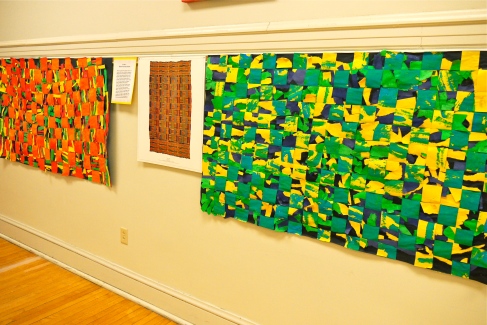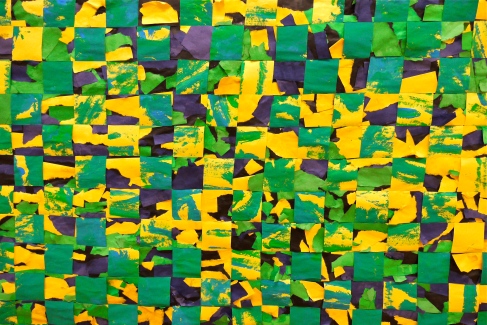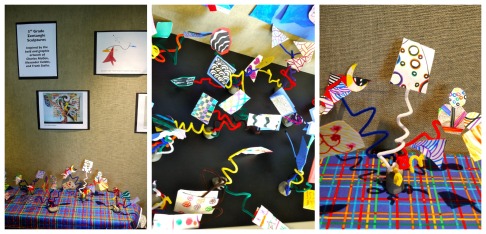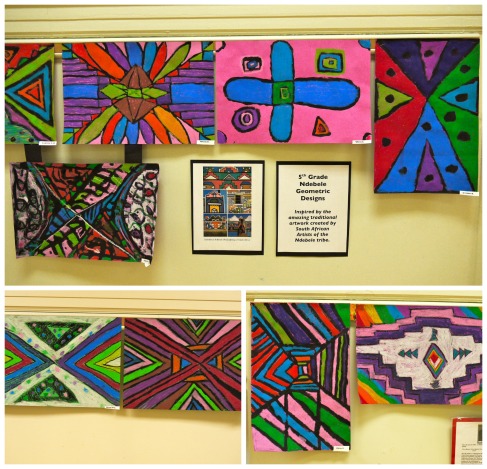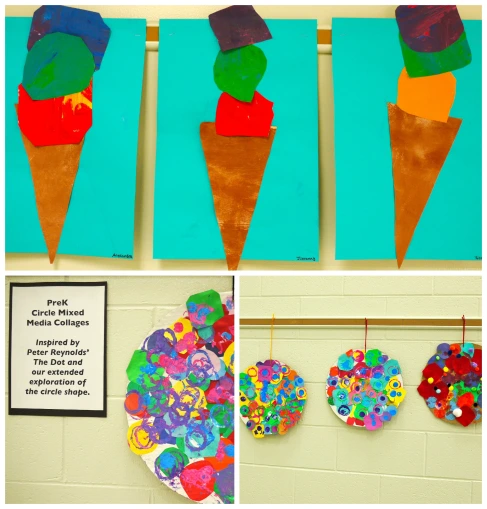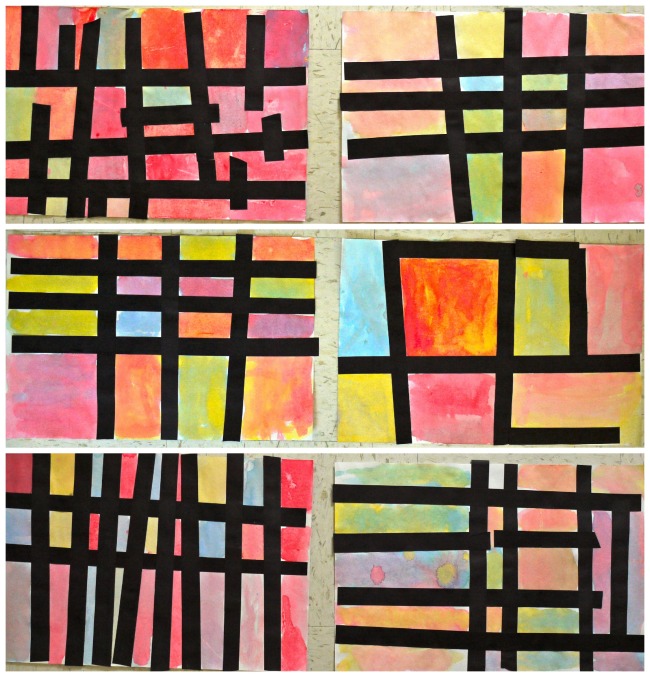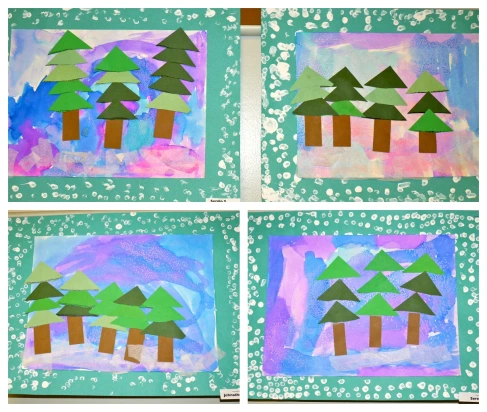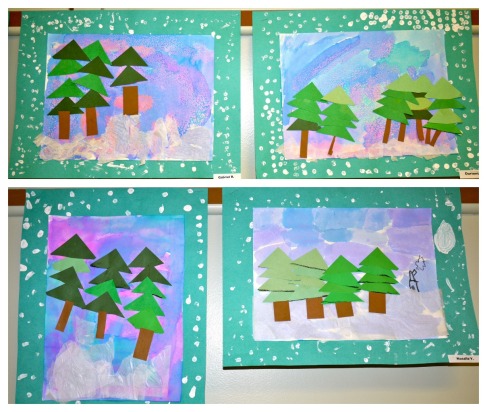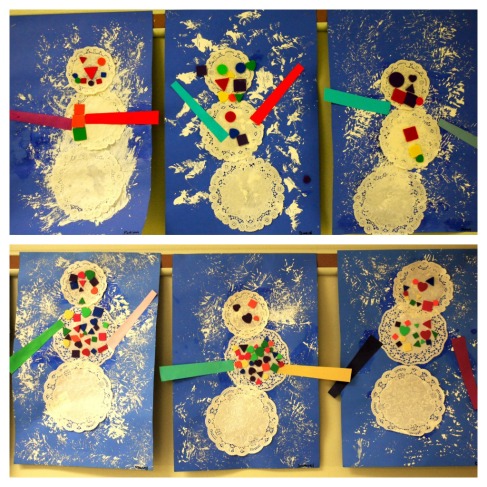Closing out our African Art Unit, PreK students helped to make these giant collaborative Kente Cloths over four 30 minute class periods. First, students used their fine motor skills to practice cutting strips of paper in some of the traditional Kente cloth colors. The next class, students took turns gluing the strips to large butcher block sheets of black paper. The third class, they tried out some color mixing on oversized paper. For the grand finale, we watched this great video showing examples of the Kente cloth and artisans weaving them skillfully on large looms. We learned when you weave you have to go over and under like a pattern. Ahead of time I folded and cut the black collaged paper into a huge warp and the painted paper into strips for the weft. Students took turns weaving carefully until each Kente cloth was complete. What a statement they made!
Inspired by this project found on Artsonia.
